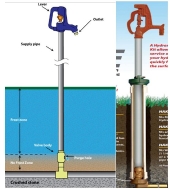
 1
1




 3
3




Invasive plants are Earth's way of insisting we notice her medicines. Stephen Herrod Buhner
Everyone learns what works by learning what doesn't work. Stephen Herrod Buhner
 3
3




 4
4




 2
2





 11
11





 2
2




For all your Montana Masonry Heater parts (also known as) Rocket Mass heater parts.
Visit me at
dragontechrmh.com Once you go brick you will never go back!
 1
1




 5
5




Visit Redhawk's soil series: https://permies.com/wiki/redhawk-soil
How permies.com works: https://permies.com/wiki/34193/permies-works-links-threads
 2
2




 1
1




$10.00 is a donation. $1,000 is an investment, $1,000,000 is a purchase.
 2
2




 3
3





 1
1




 2
2




Best luck: satisfaction
Greatest curse, greed




Diane wrote:
I found inexpensive heating cable for roofs, but they state they shouldn't be used for hoses. Maybe run the hose through PVC pipe and use that cable with heat tape around the pipe? Does anyone have any better ideas?
 1
1




 2
2




Travis said, "My go-to ground thawing method is to use sheep manure and hay (the bedding the sheep are on). The resulting compost puts out a lot of heat. I pack it around my hydrants and water lines to keep them from freezing.
Last year my radiant floor heating system froze up, so I packed manure/bedding around the edge of the house and in a few hours it thawed it out.
Invasive plants are Earth's way of insisting we notice her medicines. Stephen Herrod Buhner
Everyone learns what works by learning what doesn't work. Stephen Herrod Buhner




Douglas Alpenstock wrote:Okay, thinking super Lo-Tech here, but is there an option of pushing WARM water from the inside of the house? Say, from a laundry room?
You said it was occasional. If you pushed warm water through, and then physically drained the hose by walking its length and lifting it so an ice plug could not form, you might just be in business.
It's a helluva lot less energy than heat tape.
$10.00 is a donation. $1,000 is an investment, $1,000,000 is a purchase.
 2
2




Cécile Stelzer Johnson wrote:We are talking about 100 ft. of hose, fastened at both ends., so drained might not be really drained and it would still form ice inside, IMHO..
 1
1




Douglas Alpenstock wrote:
Cécile Stelzer Johnson wrote:We are talking about 100 ft. of hose, fastened at both ends., so drained might not be really drained and it would still form ice inside, IMHO..
Based on the OP's original specs, I don't know that the hose would be fastened at both ends. With some insulation, maybe a little warm water, maybe a little compressed air, it could be done.
But still, it's pretty fussy to make sure a hose is clear. In late fall, as i'm trying to water in the perennials and soak them down so they don't freeze-dry, the hoses have a talent for making me look foolish.

$10.00 is a donation. $1,000 is an investment, $1,000,000 is a purchase.
 3
3




Our Destination is Our Legacy
www.peacefulvalleyfold.com

|
Willie Smits increased rainfall 25% in three years by planting trees. Tiny ad:
Rocket Mass Heater Resources Wiki
https://permies.com/w/rmh-resources
|






